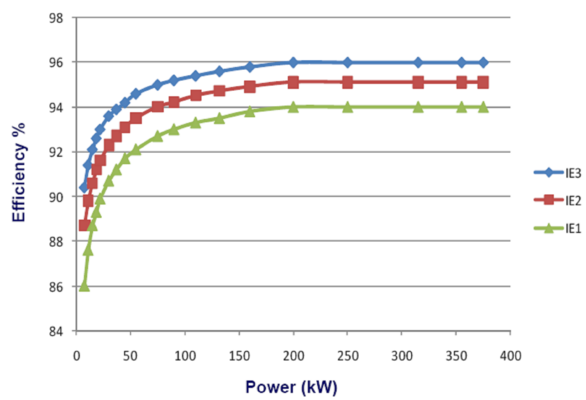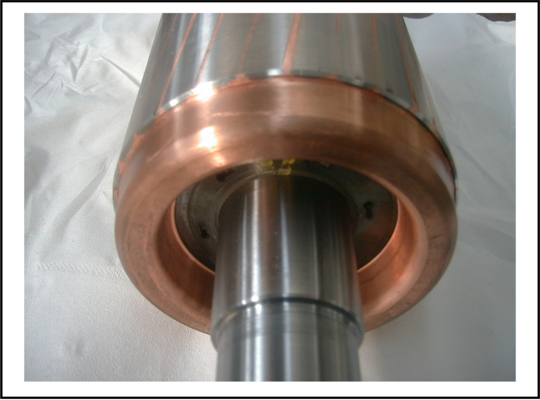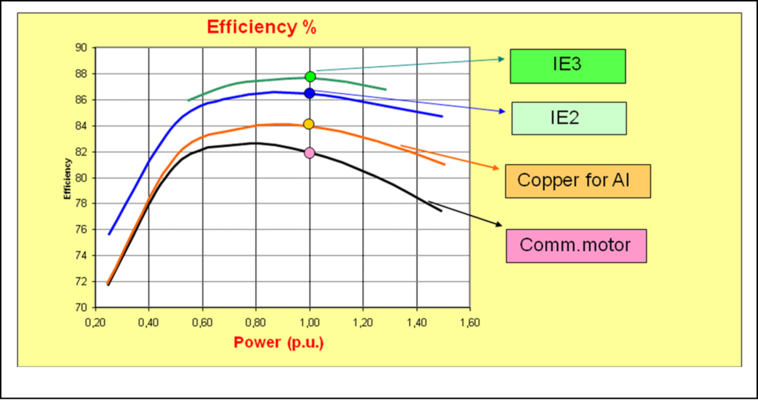Electric Drive Systems have a significant impact on the consumption of electricity and induction motors are one of the components involved, which can contribute to energy savings. It is common that in industrial activities most of electric energy consumption is due to electric motors and economic benefits can be obtained in a short time through a more efficient use of them. Suffice is to say that the total cost due to the life cycle of the motor (typically above 10 years) is caused 98% to its electrical energy consumption; only 2% is caused to its starting costs (purchase and maintenance). A preliminary study carried out by European Community shows that electric motors are put on the European market in large quantities, and their energy consumption in the use phase stands for the most important environmental feature among all life cycle phases, with an energy consumption of 1067 TWh in 2005, equal to 427 Mt carbon emissions. Without control measures energy consumption will necessarily increase reaching 1252 TWh in 2020. The study concluded that energy consumption both in life and use phase can significantly be improved, especially if motors used in speed and load variable applications are fed by inverters. In consideration of all these preliminary remarks the use of technological advanced motors and drives systems is preferable: total energy efficiency improvement capabilities of these systems in an economic successful way are measured of about 20-30%.
The new three phase induction motors classification scheme (EC Regulation Nr. 640/2009) has introduced two efficiency levels (fig.1): "high efficiency" IE2 and "premium efficiency" IE3, totally new for Europe and corresponding to the American "Nema Premium" for 60 Hz. From 2013 the newly revised Efficiency Classification in IEC 60034-30-1 also includes motors from 0,12 kW to 1000 kW, with two, four, six and eight poles and will go up to the new efficiency class IE4 Super Premium Efficiency.
In the Euro-zone the following timetable has been defined and will be mandatory:
- From 1st January 2015, motors with a rated output of 7.5-375 kW shall not be less efficient than the IE3 efficiency level or meet the IE2 efficiency level and be equipped with a variable speed drive.
- From 1st January 2017, all motors with a rated output of 0.75-375 kW shall not be less efficient than the IE3 efficiency level or meet the IE2 efficiency level and be equipped with a variable speed drive.
The new agreement from the European Commission has to promote the penetration into the market of technologies able to reduce the environmental impact of electrical devices during their entire life cycle, with an energy and electricity consumption saving. Circulation and penetration of the new motors into the European market must be combined to actions pointed to verify the effective efficiency of motors, in order to assure the exact correspondence between the new products and the efficiency levels fixed by the European Commission.
The new motors classification and the coming dates open new settings for electric motors manufacturers, which will have to adapt their production cycle and invest in development strategies for high efficient motors. The improvement of induction motor efficiency requires the use of innovative technological solutions and the optimization of the motor design, keeping construction restrictions typically adopted for these motor classes. New technologies and the use of new design criteria seem to be the most efficacious methods to obtain high performance and high efficiency motors. The challenge is to develop high efficiency motors without substantial additional cost.
The efficiency improvement releases less heat, thus allowing the use of smaller cooling fans, reducing mechanical losses. Moreover, a careful design of the motor also allows having a "flat" efficiency curve able to ensure, also in case of load variations, a value close to the optimal one.
The University of L'Aquila (Industrial Engineering Dept.) has developed research activities in energy saving for electric motors long since, and it has been involved in two projects financed by European Community - SAVE II-DGXVII ("Study on Technical/economic and Cost/benefit Analyses of Energy Efficiency Improvements in Industrial Three-Phase Induction Motors" and "Barriers Against Energy Efficiency Motor Repair"). The research activity in this field has allowed new materials and innovative technological solutions to be tested, thank to the cooperation with several manufacturers, in order:
- to define the design strategies;
- to verify the actual efficiency improvements;
- to verify the arrangement of the new motors with respect to the European Classification Scheme.
The use of die-cast copper rotors have been tested (fig.2), compared to the traditional aluminum cage, and this solution allows increasing the electrical energy efficiency of the motor. Experimental tests on several prototypes have shown that motors with copper-containing rotors would yield overall loss reductions from 15% to 20% compared to the aluminum counterpart. The use of new materials does not guarantee the achievement of high efficiency levels. Further improvements can be obtained if the use of new technological solutions is associated with an accurate motor design allowing optimizing the advantages of the new materials (premium steel and copper cage). For these reasons, a design optimization of the motor design is mandatory. The use of new design methods and new technological solutions has led to the design and construction of several prototypes of three-phase high efficiency induction motors for industrial applications. These prototypes want to be a practical demonstration of the results that can be achieved through an accurate design and a right choice of the active materials. Fig.3 presents an example of small size induction motor (3 kW, 4 pole) and points out how the design strategies reflect significantly on efficiency and allows the motor to "move" from lower to upper efficiency classes (starting from a commercial motor), and particularly: substitution of copper cage for aluminum cage, the use of premium steel and the design optimization of copper cage motor with new stator and rotor lamination.
The new efficiency classes and upcoming deadlines open new scenarios for the manufacturers of electric motors, and the new technologies and sizing procedures allow high efficiency levels to be reached (IE3, IE4). For Italian companies, energy efficiency can be a great opportunity for development and product innovation that will lead to an upgrade of the production processes and new classes of high-performance electric motors.
By Enzo Chiricozzi and Marco Villani, Industrial Engineering Dept., University of L'Aquila, Italy

























































